So, I've recently been doing a playthrough of every campaign on hard, but with the twist of not being able to go above no upkeep, or 20/25 supply, if it was one of those missions where you can't build stuff. I've done this with the other two first books, so I've figured that I might complete this one before I switch away from Arkain for a while
(I've got nothing against the campaign series, but I just don't feel like playing through all the material in one go). I specifically saved this for last
The story got a bit less attention than the story of the other two books, but I still think it holds up:
- I feel like the reason why I haven't seen as much engagement about the orc story is that it's rather simple both in its premise and execution, while the undead have a more complex premise, and the humans have a more complex execution.
- I don't think that's a problem, as there are many amazing simple stories out there, and the concept of ambitious people trying to desperately prevent the extinction of their race is a really good one to build a story on. And I definitely have a thing for stories that make it feel like the good guys are in an environment where they don't belong, which makes survival a pretty intense task for them.
- The one thing that really seemed to bug people here is the hypocrisy of the orcs, which - as Jayborino pointed out once - has caused a weird kind of hatred for them in the fanbase. Upon closer inspection, I can definitely see where they're coming from, as the orcs were the ones that initiated their conflict with the humans, and Rangul is definitely wrong to call them xenophobic when they were the ones to start killing humans on sight from the moment they arrived on the continent (and btw, humans are cool with elves and dwarves, and eventually, with even weirder creatures too).
- But to me, this seems like more of an intentional writing choice than a mistake, as Arkain really wants to make it abundantly clear that both the humans and the orcs are terrible in their own way, which is why I really just can't hate the green folk (and because of course, as Jayborino pointed out, they aren't real).
- In my reviews, I tend to also go over the music here, but unlike most big campaigns, Arkain basically never uses anything other than the default human/orc/undead themes. This isn't a huge problem, as the original tracks are honestly quite good, but I do have to warn you that completing these campaigns take a while, so I generally recommend that you use a personal playlist for this one.
I've already went over my general thoughts regarding the gameplay of Arkain in my review of the Undead Book, but here's a bit of a refresher:
- The thing about Arkain is that it has a pretty simplistic, but an iconic and well thought out design that either really appeals to you, or really doesn't (I'm in the former category, btw). LoA campaigns are a bit challenging and grindy, and take up quite a bit of time and energy, but they feel extremely rewarding when completed, and the process is still usually quite fun, even despite moments of tediousness.
- Despite what some people might claim, I actually think they're really well balanced. They definitely started off a bit dumb (if you played the release versions of the second human and orc books, then you know exactly what I mean), but I think they're in a decently solid state right now. I do think there are some levels that go a tiny bit too hard on the player, while some others might go a tiny bit too easy on the player, but I've seen waaay worse.
- I think a big appeal of these campaigns is the huge variety of new factions and units that got added. Unfortunately, the first books don't really go hard with them, and the undead and orc books are especially underwhelming with the new units (both of them give you a grand total of 2 new trainable units (and no, a reskinned and renamed tauren doesn't count)), but don't worry, the second books and the True Story go way harder with it, and this is only the tip of the iceberg.
- In the undead review, I kind of went on a bit of a ramble about how the choices are underwhelming and meaningless there, but that doesn't apply to either the human or the orc books, because thankfully, you'll actually get to see the effects of your choices once you head into the second books. The orc storyline, in particular, has a very interesting idea with the human relationship building that I'm not going to spoil here. But I'm definitely very surprised that the orc books are the only campaigns that seem to be doing this, when it's such an obvious and excellent way to make a campaign more interesting.
The heroes weren't really anything groundbreaking, but they were all pretty good in the grand scheme of things:
- In terms of gameplay, Rangul is probably the most underwhelming Arkain main character by default, but his utility becomes absolutely insane once he gets access to the Scepter of Healing. I actually really like this, because it shows that Rangul is someone who is not that exceptionally good at anything, but he still manages to gain power through his great achievements.
- Rath is very much a brute force kind of guy, acting as the Grom to Rangul's Thrall. And his gameplay definitely lives up to it, as he doesn't really have a lot of fancy magical tricks, but instead has a ton of damage everywhere. Avenge is also a really cool ultimate, though waiting a lot to unleash his rage doesn't fit him that well, but I digress.
- Sasrogarn has become somewhat of a meme character, which to this day, seems like something that came completely out of nowhere. I suppose that was partially due to how his character was handled later on, and his apparently... weak... kit? Guys, he's literally an upgraded Far Seer. He's Thrall, but better. How in the world did he become known as the weakest character, when there are plenty of characters with less power in the lore (Rath) or a less useful kit in game (Largoth)? I'll never be able to understand this

- Zairmak's gameplay seems to be pretty well loved by the community, but I always found it just... fine. He's a single target disabler whose entire role is to shut down enemy heroes and other tough units, while zapping some buildings and supplying others with mana (thanks for allowing him to do that btw, it's an absolute game changer in CH7). He doesn't really do anything exciting, but he does his job well, which fits his character, I suppose.
- Vanessa is absolutely amazing, and I find it shocking how nobody really talks about her. I don't know if this was the orc training, or if she was born that way, but this girl obliterates aoe fights. Having an ultimate that is basically Inferno but with a granite golem feels completely busted, but I guess it aligns well with Arkain's "if everything is OP, nothing is" design philosophy.
- Gorthog and Dogran are only available for a short section in a single map (while being potential allies/enemies in another), so it's fine for their kits to not be that interesting. Though I gotta say, the idea to have these two team up and force the player to strategize around them was quite good.
I usually make some extra comments about campaigns in this section, but I really don't have many specific things to say about the First Orc Book in particular, so I'll just copy over some of my comments from the First Undead Book review that still apply here, along with some weird stuff I noticed:
- This is an extremely minor thing, but the Arkain campaigns like to use a lot of random melee map hero names on the enemy heroes. Which is perfectly fine, as many campaigns (including the ones made by Blizzard) have done this too, but the problem is that some of those hero names belong to characters from Warcraft's canon lore, like Samuro, Nazgrel or Azgalor. Since these campaigns take place in a completely different universe, I feel like those names should be removed.
- I feel like the terrain here is basically the perfect representation of alright. I don't think it's really that spectacular or interesting, but it does its job fairly well. A lot of the different locations have different kinds of terrain design choices that do a pretty good job at portraying the locations the maps are supposed to take place in. I like how this campaign actually uses huge open battlefields. Some people might call it lazy design, but I think it's great, especially because if you imagine a medieval battlefield, you would imagine something that is open and somewhat barren. I specifically like them here, because the Arkain campaigns use them sparingly, and because they're much more pleasant than those dumb tiny choke points. (Which are used even more sparingly. Thankfully.)
- I'm not the biggest fan of the default difficulty selection, as it's kind of weird, and is pretty annoying to use. It's a very minor thing that doesn't really have an effect on a a campaign's quality, but changing it to work like in Tunro's and OutsiderXE's campaigns would be a pretty nice QoL change.
- Just like with the undead campaign, Shar seems to have gotten indecisive about the name of a chapter again, while also somehow getting the number of the chapter wrong (it's supposed to be the sixth, not the seventh mission). View attachment 405884 View attachment 405999
- There were two other weird inconsistencies I've noticed here. The first is that the tooltip of the Berserker Strength upgrade doesn't mention the fact that warlords also benefit from the upgrade, despite the fact that in reality, they do receive the bonus health and damage that a grunt would.
- And the second one is this cutscene. I know that most people don't care about this, but what the hell are those Darkmind and Imperial units doing, fighting on the barren looking Orc Islands? Aren't they supposed to be in the grassy forests of Lor? Because this area doesn't look like a forest to me.View attachment 405705
And so, it's time to talk about about the chapters. I will be going over individual choices, so here's your spoiler warning. I'm not sure if these maps are going to get updates at all (since Shar is probably focusing on the True Story), but that won't stop me from talking about them:
CHAPTER 1 - A fairly normal, short and easy micro mission with multiple sections. It's a pretty standard, but decent way to start off a campaign, and there's a reason why it's being used a lot in both official and custom campaigns. What I really like about this map is that despite the fact that it sounds kind of generic in theory, it actually still has its own unique flavor, due to its first section where you have to obliterate a village, and due to the fact that there isn't a lot of rescuable units, so good micro and resource management is much more important than in other starting micro missions (like in Landfall or Rise of the Naga). The only weird thing about this mission of some of the English usage, like the "he himself leads one of the assaults himself", or Ephrog's sentence that should probably be switched to "We can still blame and kill each other later..." because, well, let's just say that the current one means something completely different than what Shar had intended 
View attachment 405698
View attachment 405699
CHAPTER 2 - I'm going to be completely honest, I'm not a huge fan of this map. I don't really have many complaints when it comes to the quality and creativity of the level, but the early game restraint that I've praised the First Human and Undead Books for is not exactly present here. Does this map go as hard as a lategame massacre like Siege of Kome, Green Wave or Possession? No, of course not. But I don't feel like Shar really acknowledged the fact that there's a huge lack of tools
(especially healing ones) that players will have to deal with. Though I could imagine that the map was intentionally designed this way, to make the Scepter of Healing feel more important, while also preventing people from brute forcing their way through the 3 bases, and making them sneak through the tunnel instead. I personally disagree with this choice, and I feel like the map would be more fun if hunters would have access to some kind of healing mechanic
(Maybe make them heal the nearby friendly unit with the lowest current health when they kill an enemy?), and/or if the captains would loose the ability to cast Defend in this mission. There were also two weird bugs that I've found on this map: one is that enemy heroes don't have a cap on their experience, and can get all the way to level 10, while the other is that the granary on the bottom right corner of the map apparently provides no bonus resources from Pillage.
Though to be fair, a lot of my complains could just be due to me playing the map on a challenge run, and due to the map coming up right after an interlude (meaning that it got auto switched to hard).
CHAPTER 3 - This one feels a bit more tame than the previous one (possibly because you have two heroes instead of one, the Scepter of Healing, more available units, rescuable units on the map, an allied base and less enemy bases that send attacks), which is nice. This map also feels a bit more cohesive and well thought out as well. I really like the design of the broodmother choice, as it allows the player to either gain benefits in this campaign killing her or in the Second Book by leaving her alive, meaning that you don't really have a "right choice", but instead, you need to think about what you yourself would prefer. This unfortunately doesn't apply to the Kasrkin choice, as you don't really get benefits for failing that quest (other than some gold mines), but it's probably fine, since you have to go out of your way to fail it, and most people wouldn't do that either way. My only complaint about this map is that I feel like the preplaced fights have a trigger radius that is too large, and players can often end up accidentally starting them off and not realizing it, because the units are all out of vision, which can result in them unknowingly leaving the units behind to die. The two grunts in the top left part of the map also instantly join the player, instead of waiting for the pre placed enemies to die, which seems unintentional.
CHAPTER 4 - This is one of the levels that was completely cut from the True Story. I imagine it was because the map is kind of generic, and it doesn't really bring anything new for either gameplay or lore. Now, just like Fists and Claws, this is also a mission with a choice, but I'm not as sad about this map not making it in, simply because The Second Orc Book has actually shown what the effect of the choice is
(which is admittedly pretty minor), so we aren't left hanging, like we were with the undead tunnel. As a concept though, I think it's pretty neat to split up the mission into effectively two different maps, and then allow the player to pick the map that he wants to play through. And for my money, it works wonderfully well here. Just one thing... why runes of healing? You... do realize we have a
walking Fountain of Health, right?
 View attachment 405827View attachment 405826
CHAPTER 5 -
View attachment 405827View attachment 405826
CHAPTER 5 - I'm honestly glad that the True Story got a new heavily reworked version of this map, because while I think that the original is fine, it definitely didn't go as crazy as it could have with its awesome concept. Working together with allies was always one of my favorite things to do in Warcraft 3 campaigns, so I definitely have a bit of a bias here, but I still think this mission works, on a design standpoint. It doesn't really give you
that many allies for free (you only get Rath and Zairmak by default), which makes sense, because orcs aren't exactly the kinds of people that would just join upon hearing some promises of success. An orc's loyalty is something you have to earn, which is shown by the fact that 3 of your 5 allies will need you to do something to gain their support, while the Ironthunder just refuses alliance altogether. (Which always felt weird to me. Since the shaman brags about being smart, you'd think that they would join once all the clans support you, but I guess Shar just didn't want your forces to go too crazy.) Destroying the mogthar base is a bit of a grind, but I always found it an enjoyable one. Though if I could have one wish, I would take some power away from the red dragons, and make the enemy ground army a bit stronger. And in terms of issues, Gorthog apparently doesn't have a level cap if the Skullblade clan is hostile, and there's a typo here
(the letter 'e' is missing from 'something').
View attachment 405883
CHAPTER 6 - The human breeze map provides an easy main quest, the undead breeze map provides a lot of free stuff to start the player off, while this one provides neither, which would make this the hardest breeze... in theory. Now, I'm not sure if this was intentional, but the fact that the enemy uses zeppelins to send attacks through all that water is kind of abusable, as it allows you to easily neutralize most enemy attack waves, by finding the spots that they send zeppelins through, and having some frigates camp there
(which sounds easy, but is admittedly tricky once you get the big island, since the humans like to mix up their routes a lot). Merlon's base is also surprisingly easy to destroy, though I wouldn't recommend focusing him out and ignoring everything else on the mainland, since there are plenty of item drops there, and you'll
really need them in the near future. But overall, I really liked the design of this map, as it has a really good flow with its early, mid and late game, and despite Warcraft 3's annoying and janky ship mechanics, I still think this one is honestly really enjoyable, and quite a breeze indeed.
CHAPTER 7 - Well well well, if it isn't Siege of Kome itself! This level is quite infamous due to the sheer amount of enemies that you'll have to deal with in very tiny chokepoints, and due to the fact that it takes an eternity to complete, because you'll have to destroy 7 bases
(though one of them can get instakilled, but I digress) with a ton of buildings that have a maxed out human building protection upgrade. Though I find it kind of funny how outdated the whole notion of Siege of Kome being the biggest and hardest macro map has gotten over the years, considering the kinds of things mapmakers have bombarded us with
(though most of the maps that beat this one are from the second books, like Lord of Shadows or A Dish Best Served Cold). And while trying to beat this mission without going above no upkeep was definitely something, it still wouldn't make it into my top 5 hardest maps, despite the difficulties I've had with
perfectly fair magic immune Theoden's base
(and despite the fact that it took me over 3 hours). Though let's be honest, the impact that this map has had on Arkain is enormous, and I'm honestly kind of glad, because it allowed the campaign series to gain a very special identity, even if it's a rather annoying one. As for things that need to fixed, the color of my ally is the same as mine, which can sometimes get confusing. Bear riders didn't get their hitboxes updated to be fixed like in The First Undead Book. And this area should become a little bit wider, because units with big hitboxes can get seriously stuck there.
View attachment 405996
Otherwise, this is very memorable map,
with a nicely designed choice at the end as a reward.
CHAPTER 8 - When it comes ramping difficulty, Arkain generally does an ok job (and by
"ok" I mean
"about as good as Blizzard did with the official campaigns"), but it always felt weird when an "easy to medium" difficulty map like this one is placed right between two extremely challenging and long maps like Siege of Kome and Pride of the Empire, though I suppose this makes sense, considering the story of those maps and the campaign
(and don't forget that the undead are loosing on purpose here). It did seem like Shar acknowledged the fact that this level goes easy on the player, because he proceeded to add another enemy base that launches attacks in the True Story, but I'm glad that he didn't do it here, because players will
really need a bit of a break at this point. The map itself felt somewhat forgettable but still pretty good, as there are a lot of things that you can do here, and there's a small choice, too. One issue that I noticed is that the mechanics of the allied Deathbreeze Clan during the double Blademaster section seemed kind of funky, and it used up my Inferno Stone that I was planning to keep until the next chapter

. So I'd like it if Shar would take a look at it, while also allowing the player to have vision over them to see if they're getting destroyed and he needs to hurry. As for lore nitpicks, Aridon showing up and killing two random chieftains sounds a bit out of character, and the grunt at the end forgot to mention that Lokar is alive too.
(He was still the chieftain of the Ironthunder clan there, wasn't he?) Oh, and seeing Lera was quite nice, especially because this lets us know what happens to her if the player kills her in The First Human Book.
View attachment 405997
CHAPTER 9 - The last time I played this map was quite a few years ago, and I honestly wasn't a huge fan of it then, but it seems like Shar did some big changes to it since then, and this time, I actually had a lot of fun. The events that happen with the humans sounds like something that would make the map an absolute hell, but honestly, they felt very fair and rather simple to counter, and they added a lot to the overall feel of the map, without being as crazy as the "Open the gates and
CHAAAARGE!!!" moment from Siege of Kome . The events weren't the only changes that the map received, as Shar has also increased the player's supply limit, removed the invulnerability from the undead buildings and toned down the enemy attacks while also allowing them to be directed at the player's allies a bit more
(which was especially noticeable with Salomar's base), all of which are amazing changes that I wholeheartedly agree with. The Bloddrinker Legion attacks on the humans were also removed, probably to keep things consistent with the First Undead Book, but for some reason, their buildings were still kept around in the bottom right corner of the map, which is just... weird. Another weird thing is that the humans send cyan peasants to rebuild the outer base, which doesn't really make sense, due to cyan being the color of the Elven Army (and the Rohir Nexus... wait a second, does that mean that this guy is... a spy?

If this was intentional, then this is an
amazing Easter Egg!).
View attachment 405998
But overall, this mission is now perfect finale, as it's a huge intense battle with a lot of things happening, which makes it very fun and memorable.
The Salomar choice is also great, and I love it when Arkain offers long term benefits for not doing what you would normally do by instinct.
And that's it for my review of the First Orc Book of Arkain. Thankfully, Hive seems to have fixed the issue where refreshing the page deletes what I've written, so I gotta give some props to whoever is managing this site, since it makes writing these quite a bit easier

The things I've written at the end of the Undead Book review pretty much apply here too, so here's a shortened refresher on that:
I'd say that this campaign is between 8/10 and 9/10, but it leans a bit more towards a nine for me. It could just be because I have a bias for Arkain, but I think that this campaign is pretty well polished, as there aren't many bugs, mistakes, imbalanced things, and grammatical errors. Sure there are some
(Oh hello there, Theoden!), but they're very few and far between. If you're looking for a campaign with a tough, but satisfying gameplay, and a really interesting narrative to follow, then the Arkain campaigns are perfect for you.
Now, I did technically interrupt my playthrough of the campaign with a vacation, so I certainly hope I'm not misremembering anything, because it's been weeks since I've played through chapters 1 to 7

(though thankfully, I've got loads of screenshots to help refresh my memory).
But anyhow, thanks to all of you who read this far, and big thanks to Shar for still working on this series even after so many years! Wish you all a great day and night!

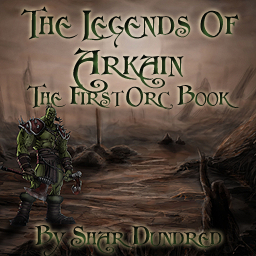
 Approved
Approved







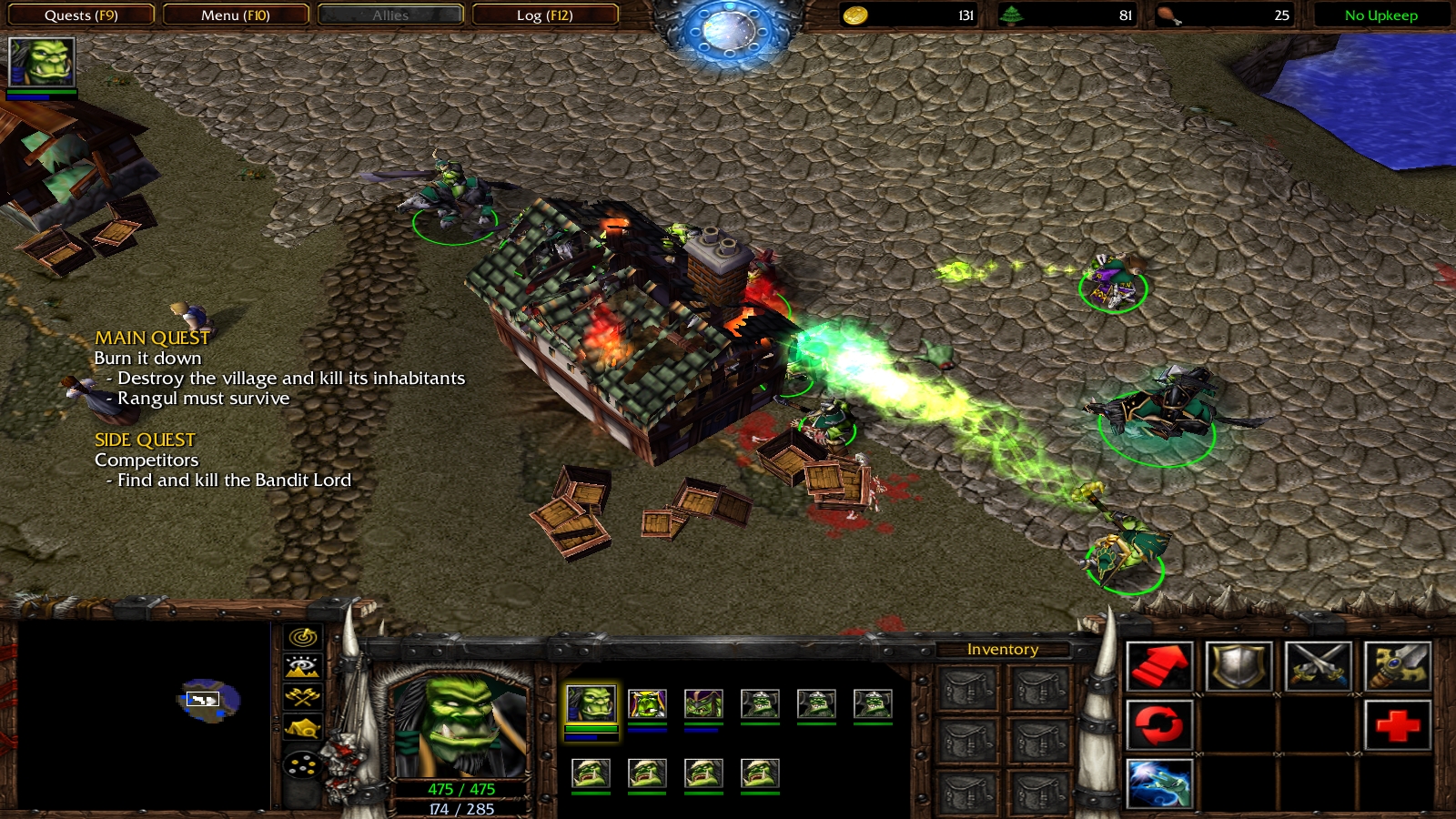
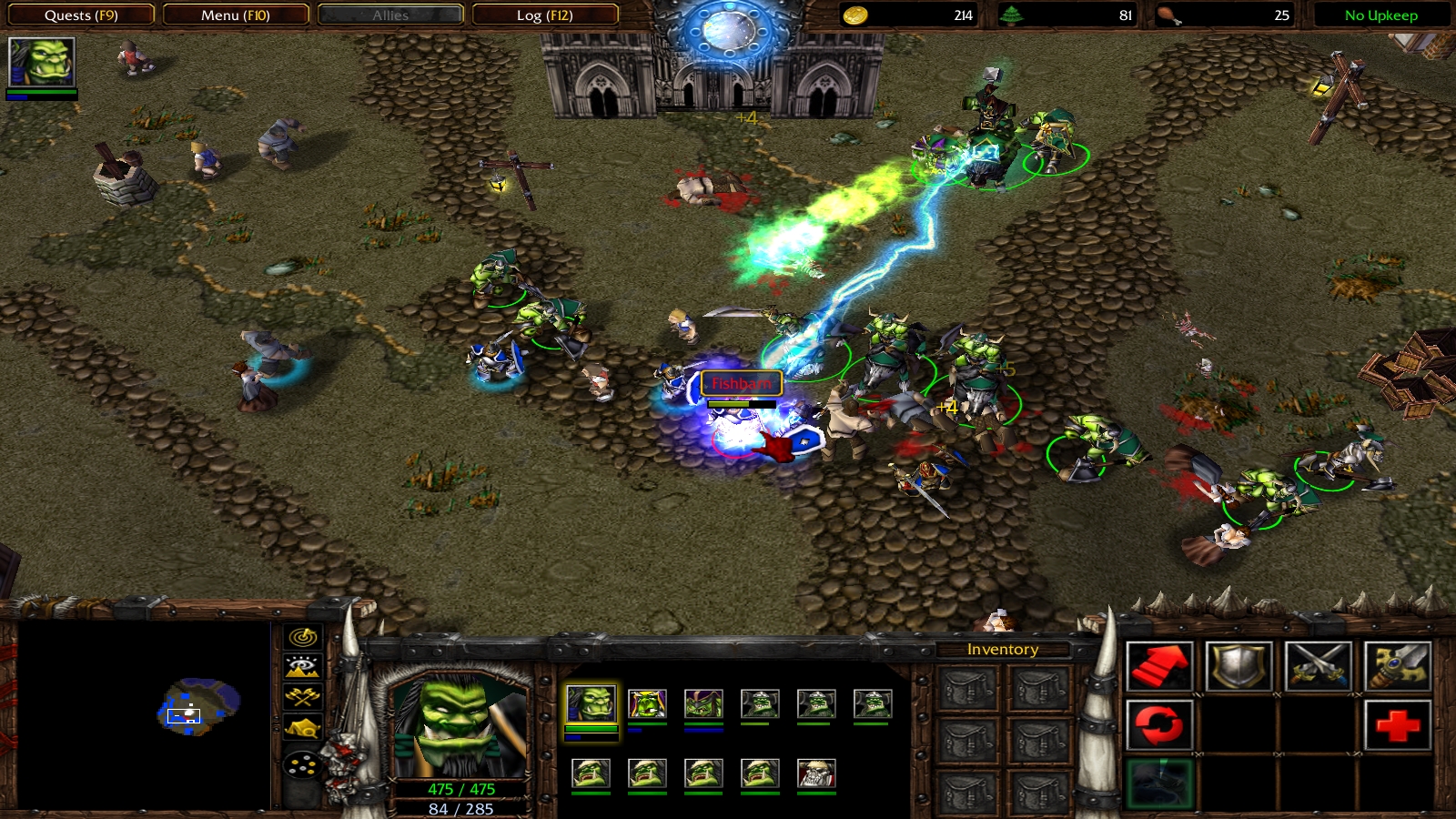
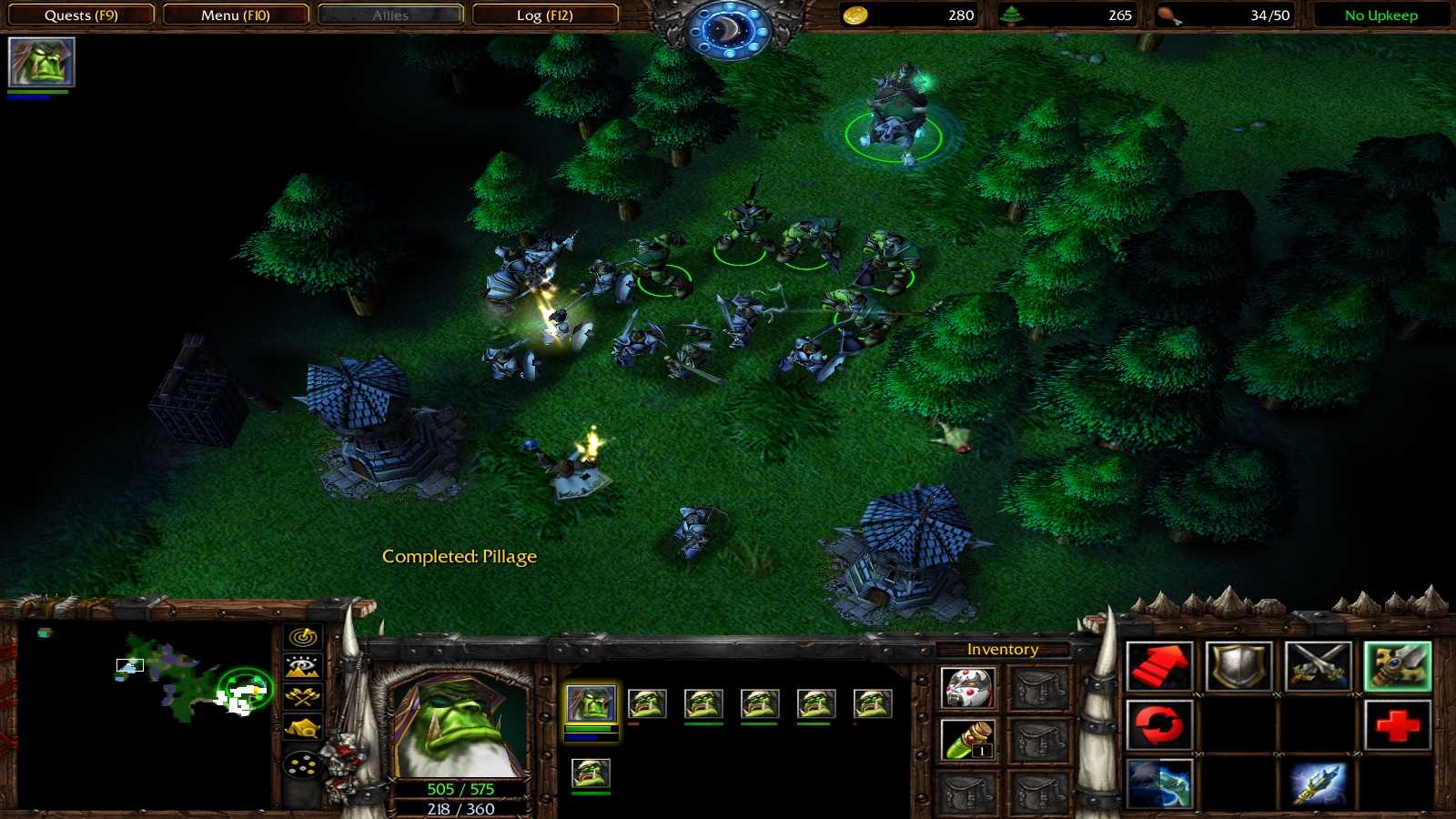
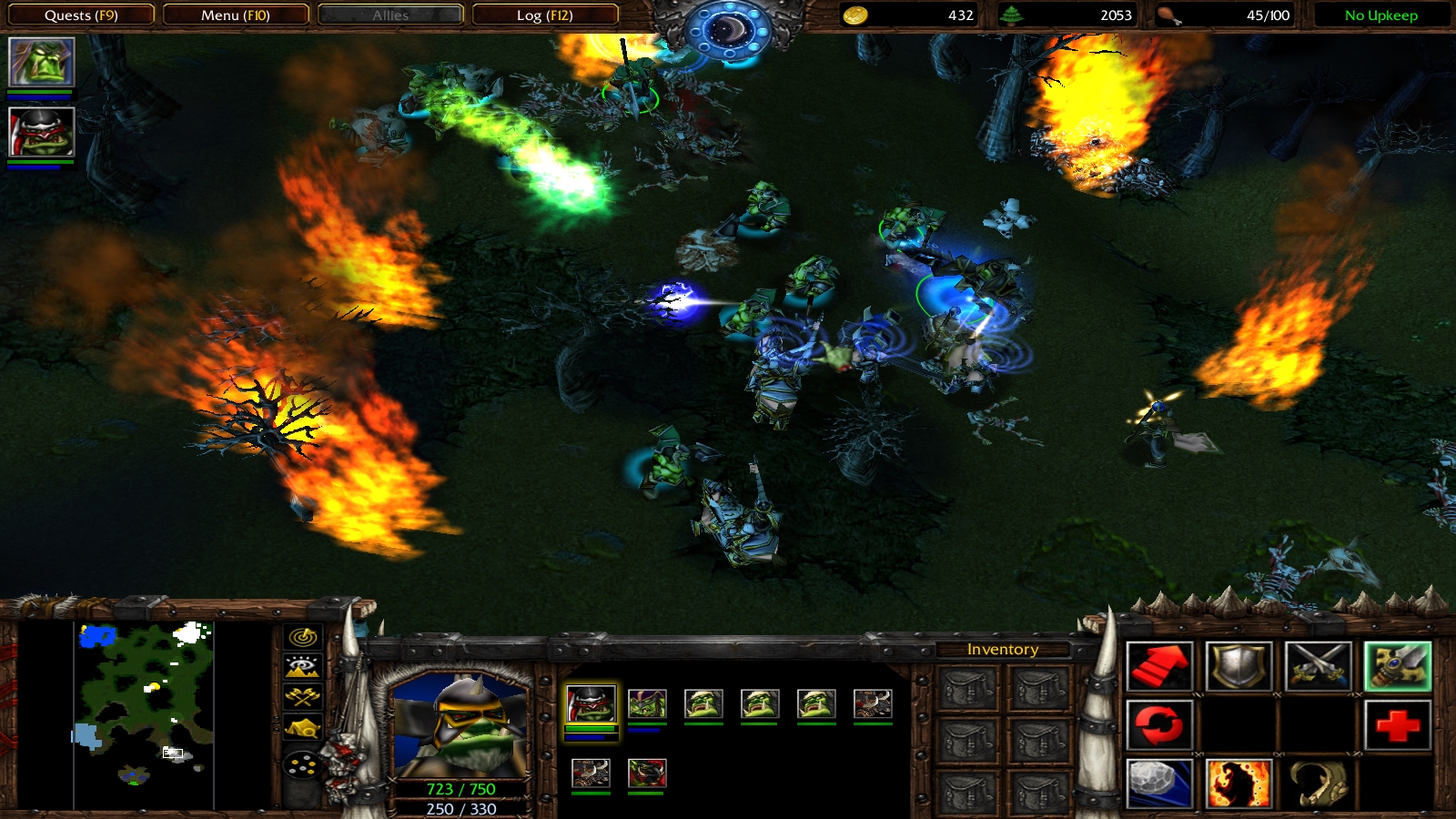
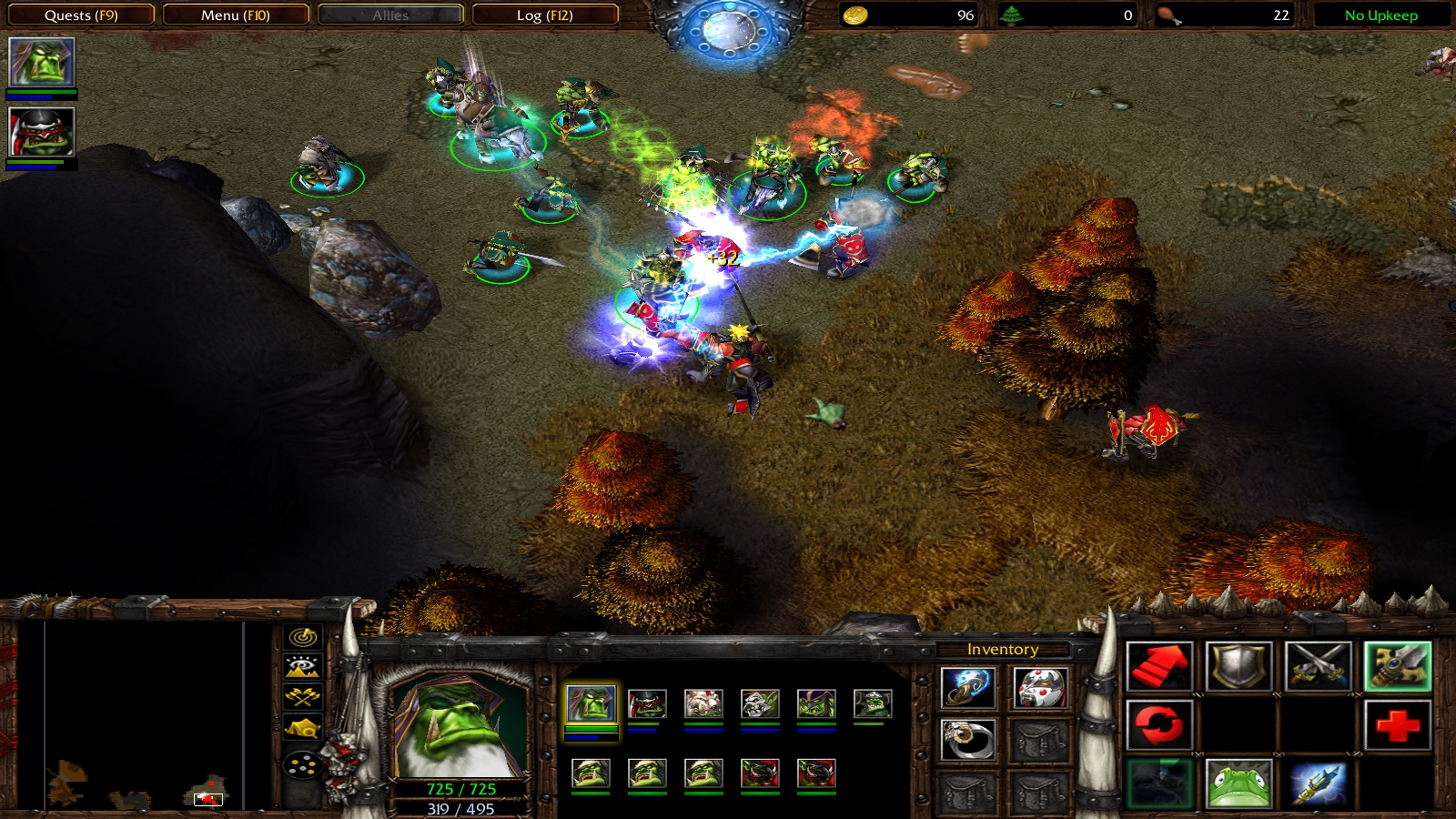
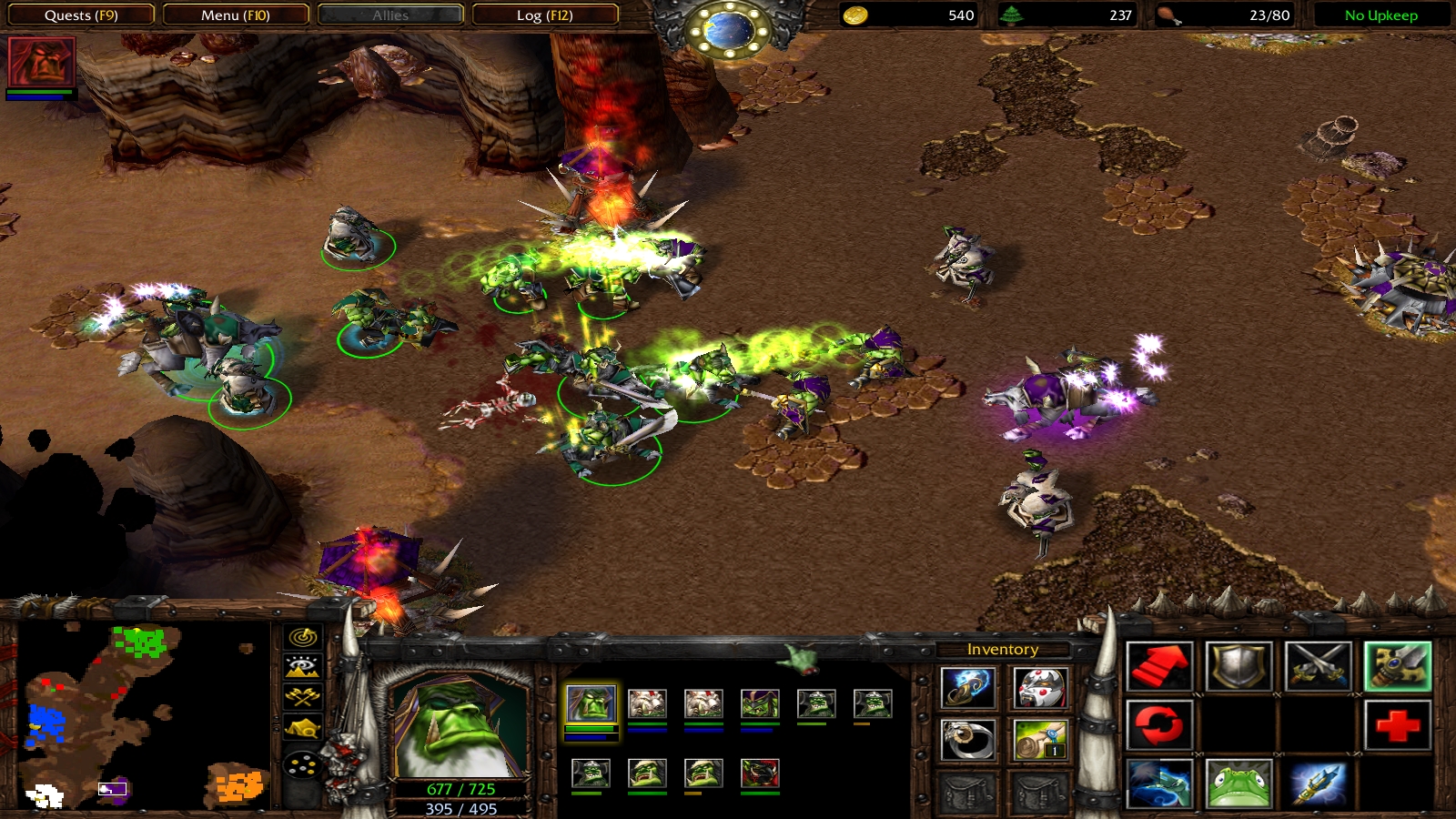
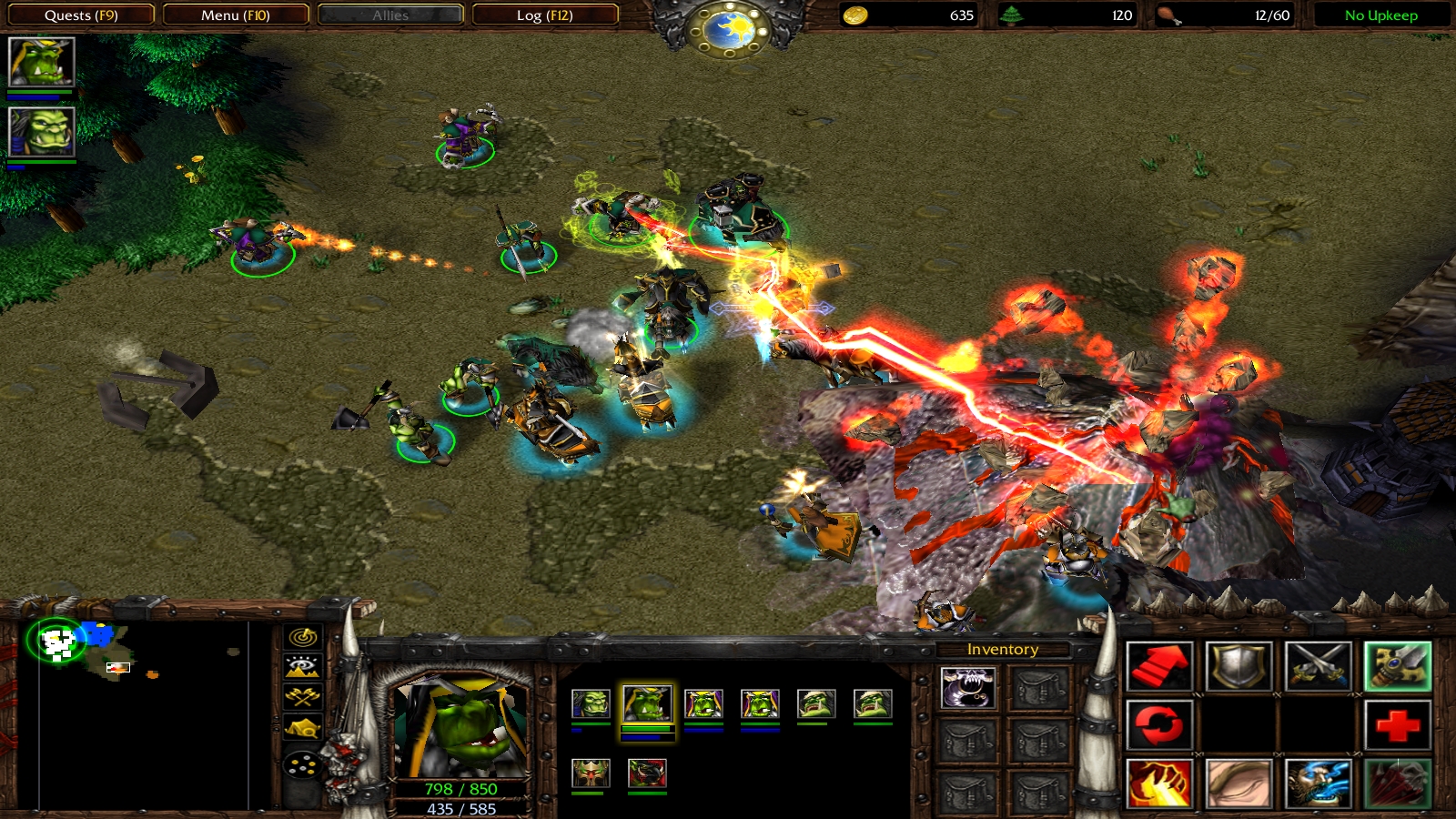
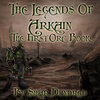




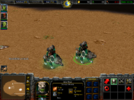
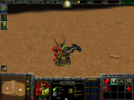
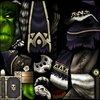




 . So I'd like it if Shar would take a look at it, while also allowing the player to have vision over them to see if they're getting destroyed and he needs to hurry. As for lore nitpicks, Aridon showing up and killing two random chieftains sounds a bit out of character, and the grunt at the end forgot to mention that Lokar is alive too. (He was still the chieftain of the Ironthunder clan there, wasn't he?)
. So I'd like it if Shar would take a look at it, while also allowing the player to have vision over them to see if they're getting destroyed and he needs to hurry. As for lore nitpicks, Aridon showing up and killing two random chieftains sounds a bit out of character, and the grunt at the end forgot to mention that Lokar is alive too. (He was still the chieftain of the Ironthunder clan there, wasn't he?) If this was intentional, then this is an amazing Easter Egg!).
If this was intentional, then this is an amazing Easter Egg!).
 (though thankfully, I've got loads of screenshots to help refresh my memory).
(though thankfully, I've got loads of screenshots to help refresh my memory).